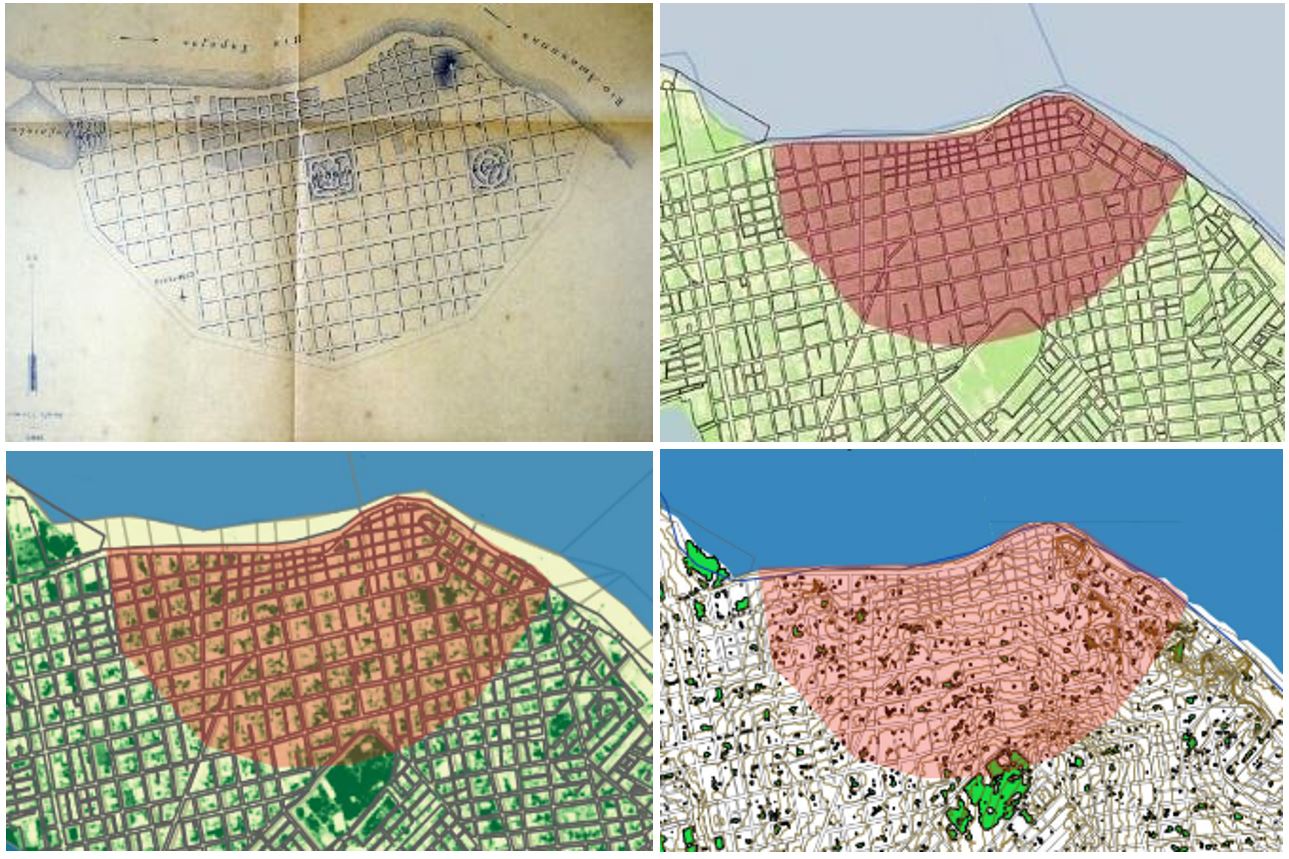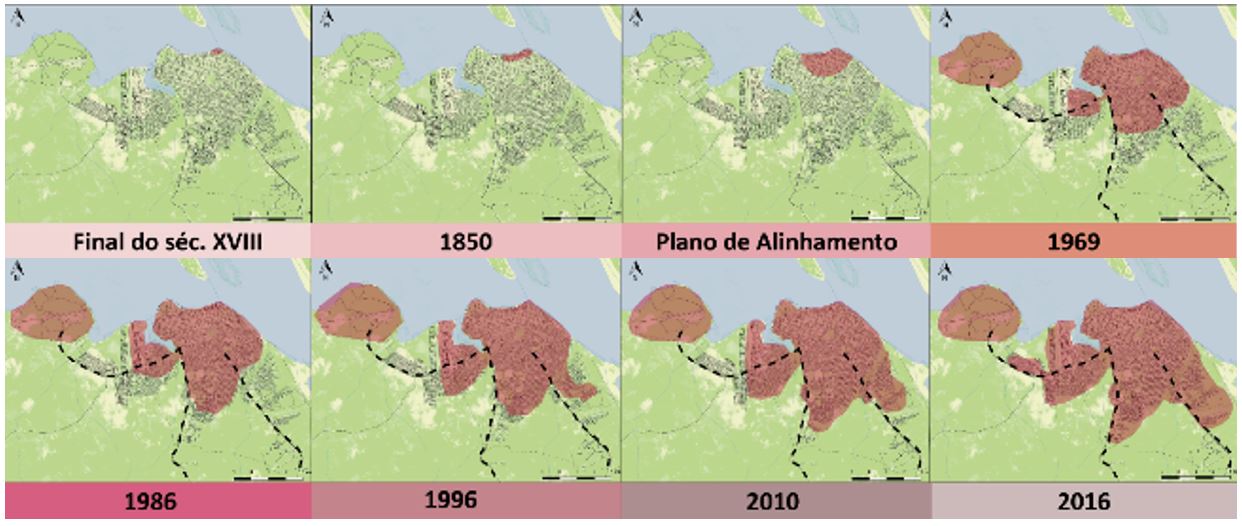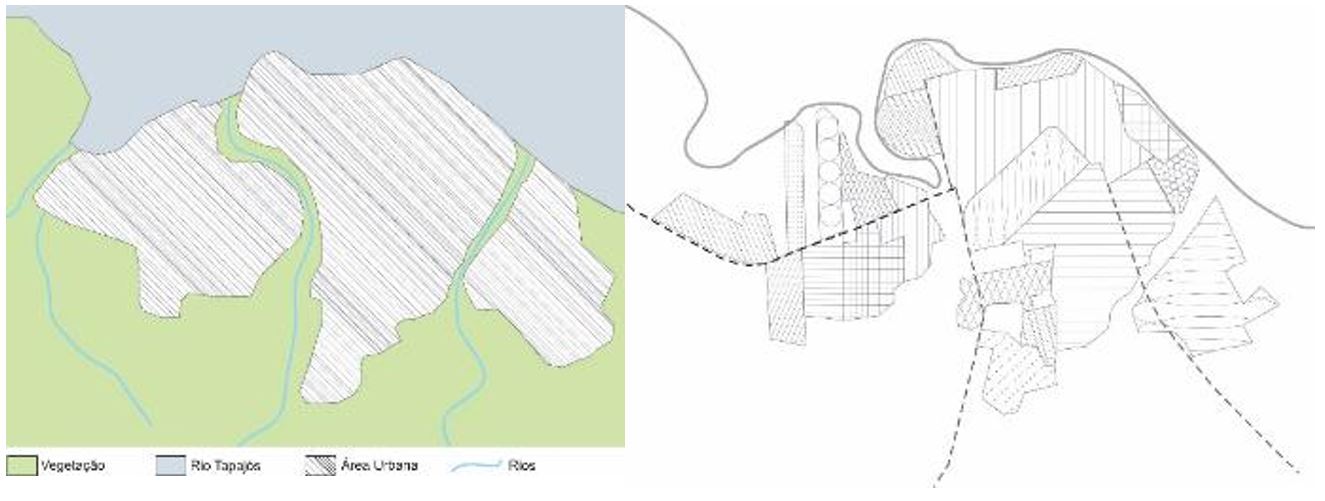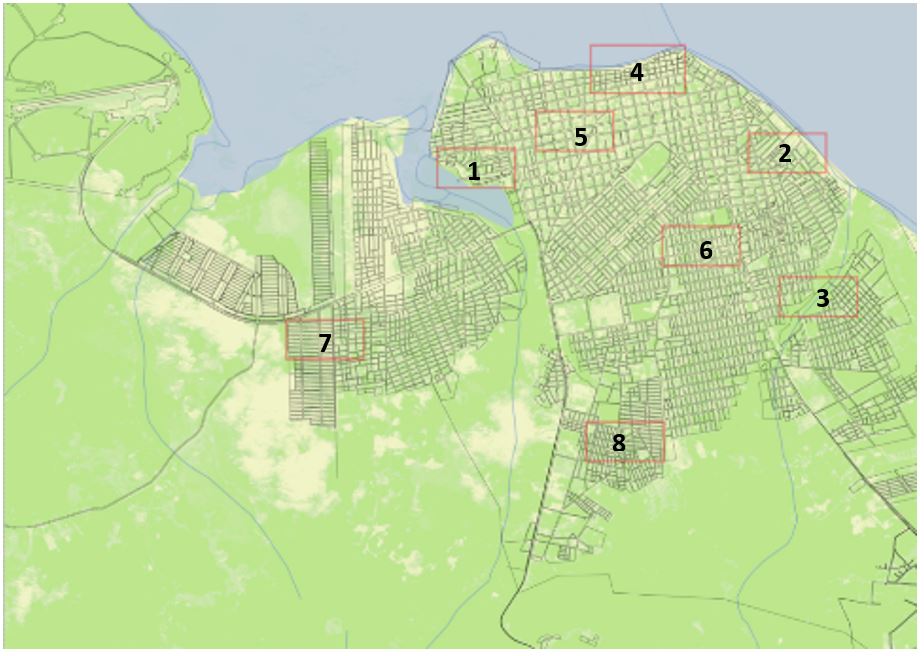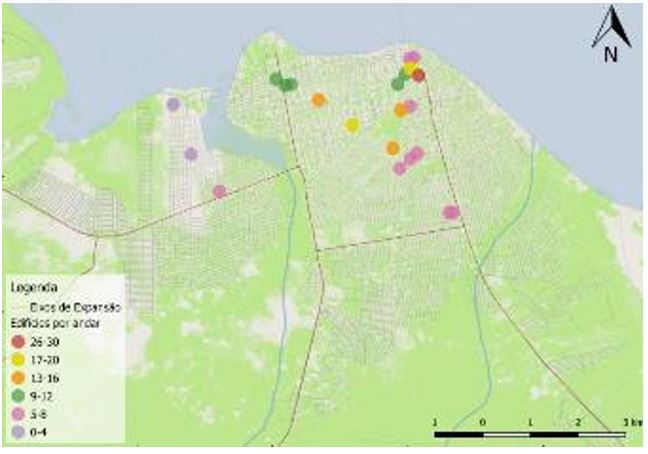Abstract
This article discusses the progressive detachment observed between city, urban, rural and nature in the Amazonian context. We start from the geo-history, Lefebvrian's approach of the spatial formation analysis of Santarém’s site and surroundings, to explain the hybrid nature of an extensive urban fabric, composed by discontinuous urban (city and village), peri-urban (communities and settlements), and rural (soybean, forest and extractive communities) typologies, according to socio-spatial arrangements from different cultural matrices. Findings based on literature review, analysis of historical cartography and digital data have shown that the urban, driven by global processes and by the economic interest, denies and de-structures territories, where socio-biodiversity and practices developed over the centuries, and carry a potential of reconciliation between urban and nature, valuable in the context of climate change. The study details the analysis of the urban fabric of the city of Santarém, considered an amalgam that mirrors the region’s socio-spatial diversity, and which best illustrates how the hegemonic conception of the city. That, applied to a Amazonian peripheral urban, has distanced Santarém from its potential of expressing the urban utopia, which will be able to rescue the inseparability of people, biodiversity, soil and water already manifested for ages in the Amazon.
Keywords:
Socio-spatial diversity; Santarém; Amazon; Extended urbanization; Urban utopia

 Thumbnail
Thumbnail
 Thumbnail
Thumbnail
 Thumbnail
Thumbnail
 Thumbnail
Thumbnail
 Thumbnail
Thumbnail
 Thumbnail
Thumbnail
 Thumbnail
Thumbnail
 Thumbnail
Thumbnail
 Thumbnail
Thumbnail
 Thumbnail
Thumbnail
 Thumbnail
Thumbnail


